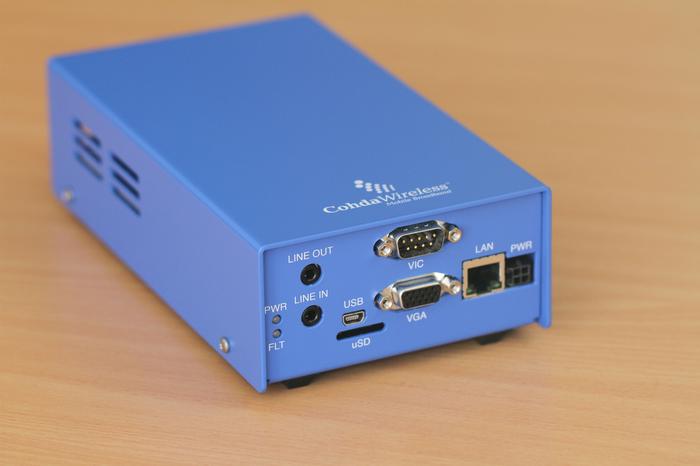An Australian-developed wireless car-to-car communication system designed to prevent car accidents could soon appear in vehicles around the world and possibly new prototypes that don't require drivers.
The technology, which was developed by Adelaide firm Cohda Wireless, gives drivers a 360-degree awareness of surrounding vehicles by broadcasting information about a car’s current position, speed and direction at a rate of ten times per second.
“Imagine you’re driving down the road to an intersection and there’s another car approaching on the side road,” said Cohda Wireless CEO Paul Gray. “You have the right of way, but the other car is travelling too fast and not going to stop in time.”
If both cars are equipped with the Cohda technology, each driver will receive a warning and can take steps to avoid an accident, he said. Unlike other systems that rely on maintaining line of sight with the other vehicle, Cohda’s technology works around corners where a building may block a driver’s view of another vehicle, he said.

Gray predicted the technology could appear in Australian vehicles from 2017. Drivers in US and Europe will likely see the technology in 2015.
“Work has commenced in Australia and there have been a number of trials in Australia,” he said. The country is “maybe around two years behind what’s happening in the US and Europe.”
Cohda Wireless is based in Adelaide was founded in 2006 out of the University of South Australia. It will soon open sales offices in the US and Europe as its technology moves closer to deployment, Gray said.
No car makers have put the system into production. However, since mid-2011, there have been large trials of the car-to-car communications technology around the world, Gray said. He estimated that Cohda has its technology in about 50 per cent of the cars participating in the trials.
To avoid a collision, car-to-car communications technology must be present in both cars involved. However, Gray cited an estimate from the US Department of Transportation that there will be measurable impact on the number of automotive accidents once the penetration rate reaches 10 per cent of vehicles on the road, said Gray.
Gray predicted it will take about three years to reach that first 10 per cent. The long-term goal is to sell the devices to car manufacturers for about $100 each to encourage adoption, he said. After-market versions may cost two or three times that, he said.
“It needs to go into all vehicles to be effective, and hence it needs to be low cost,” Gray said.
“It’s not just going to go into BMWs ... Your BMW wouldn’t crash into BMWs, but that’s probably not a common occurrence.”
Trials
The US Department of Transportation is currently running a trial of car-to-car communications in Ann Arbor, Michigan, with 2800 vehicles, of which 1500 have the Cohda technology, said Gray. The US also has a program to encourage sale of after-market devices for cars already on the road, and that technology is also being tested in the Ann Arbor trial, Gray said.
This August, the US plans to follow its Ann Arbor pilot with a rulemaking that could result in either a mandate or a requirement that car-to-car communications technology be included in new cars to earn a five-star crash rating, he said.
In Europe, a recent €54 million trial by the German government involved all the top German car makers, he said. Last October, a consortium of 12 European carmakers signed a memorandum of understanding in which the companies committed to start deploying the technology in 2015.
A smaller trial in Australia involved putting technology into trains to improve safety at rail crossings, Gray said.
Car safety tech

In most regions, the wireless technology inside Cohda’s systems is based around the 802.11p IEEE standard, a variation of the WiFi standard modified for low-latency, peer-to-peer communications. Cohda’s system also uses GPS for lane-level accuracy pinpointing the vehicle’s position.
“One of the reasons for basing the technology on WiFI is to get low-cost devices,” Gray said.
On an open highway, cars can communicate in up to a 1km range in any direction, he said. In a dense city environment where buildings obscure view of other cars, the range is about 100 metres, he said.
Because GPS signals can be lost inside a tunnel or under an overpass, the system uses map matching and other techniques to maintain correct vehicle positioning, he said.
Cohda’s system is compatible with similar equipment built by other companies. “We build a standards-compliant system that is 100 per cent interoperable with other systems,” Gray said.
Cohda has recently signed major partnerships from Cisco and NXP Semiconductor. NXP will provide the silicon chips on which Cohda’s software will run. Cisco, a “new-market entrant” in the automotive space, will provide networking equipment, he said.
A driverless future?
The first generation of the technology will provide warnings only. However, in the future the technology could be used for driver assistance—such as automatic emergency breaking—or even driverless cars, Gray said.
A future version of the system “could take control of the vehicle to try and avoid the accident altogether,” he said.
Google, which is testing driverless cars in California, does not use the Cohda system but may be a potential customer in the future, Gray said.
“Those driverless cars are all using sensors to steer,” Gray said. “This is really just another sensor to bring into the mix, but quite a powerful sensor because all the other sensors they have in the systems are all line-of-sight.”
Follow Adam Bender on Twitter: @WatchAdam
Follow Computerworld Australia on Twitter: @ComputerworldAU, or take part in the Computerworld conversation on LinkedIn: Computerworld Australia
